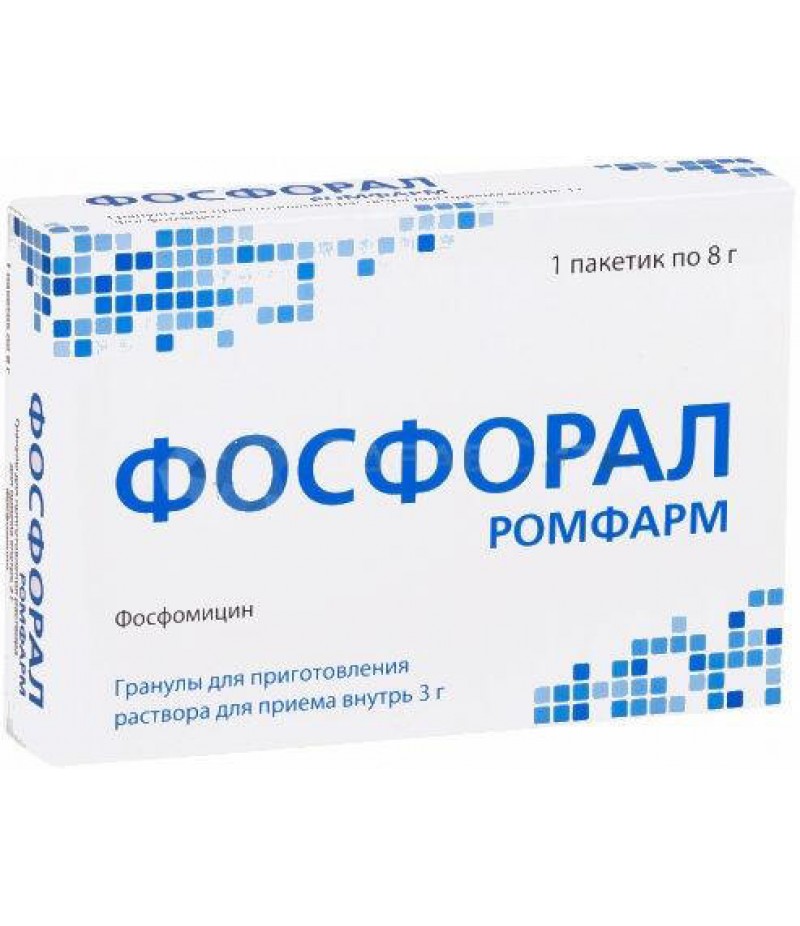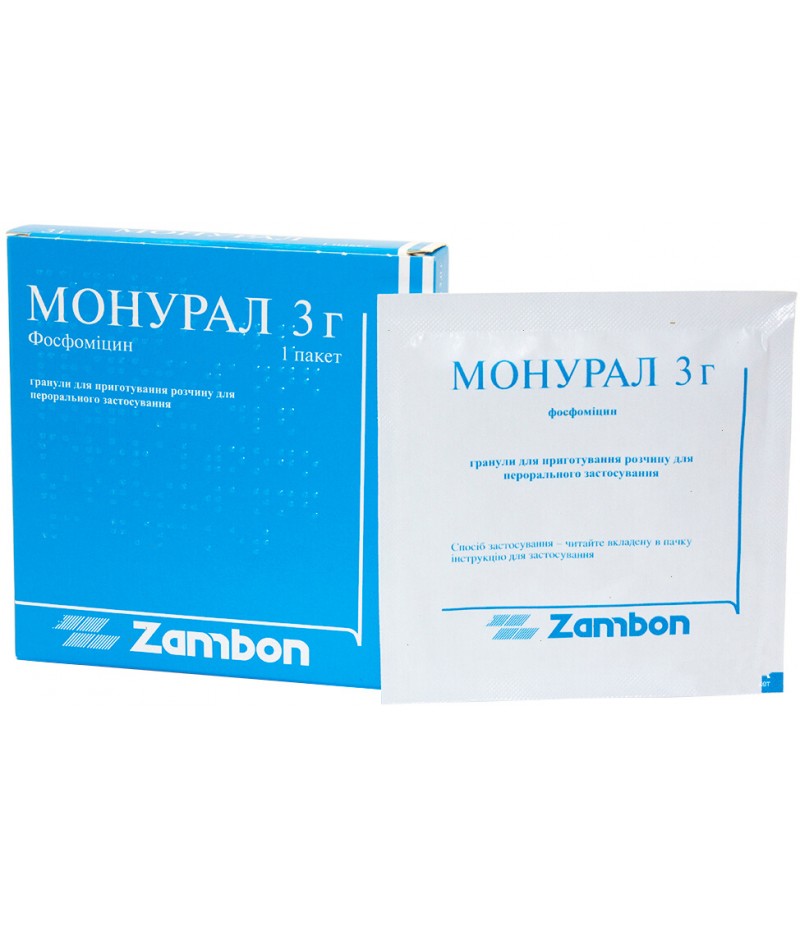Phosphoral Rompharm granules 3gr #1 8gr
- $23.59
- 3 or more $23.30
- Availability:In Stock
Phosphoral Rompharm instruction for useReed more and buy Phosphoral Rompharm on this pageIndications for use:Bacterial infections of the urinary tract of various locations, caused by microorganisms sensitive to Phosphoral Rompharm..
Phosphoral Rompharm instruction for use
Reed more and buy Phosphoral Rompharm on this page
Indications for use:
Bacterial infections of the urinary tract of various locations, caused by microorganisms sensitive to Phosphoral Rompharm: acute uncomplicated urinary tract infections; asymptomatic bacteriuria; prevention of urinary tract infections after surgery and transurethral diagnostic studies.
Active substance, group
Fosfomycin, Antibiotic
Dosage form
Granules for solution for oral administration
Contraindications:
Hypersensitivity to phosphomycin or other components of Phosphoral Rompharm;
patients on dialysis;
severe renal failure (CC <10 mL / min);
children's age till 12 years;
deficiency of sugar / isomaltase;
intolerance to fructose, glucose-galactose malabsorption.
When pregnancy is used only if the intended benefit for the mother exceeds the potential risk to the fetus. When prescribing the drug during lactation it is necessary to stop breastfeeding for the duration of therapy.
Dosing and Administration (Instruction)
Apply once, on an empty stomach, 2-3 hours before or after meals, preferably before going to bed, previously emptying the bladder: adults and children over 12 years in a daily dose of 3 g. The contents of the Phosphoral Rompharm package are dissolved in 1/2 cup of water. For the prevention of urinary tract infections during surgery, diagnostic procedures, the above dose is taken 2 times - 3 hours before the intervention and 24 hours after it.
Pharmachologic effect of Phosphoral Rompharm
A broad-spectrum antibiotic of phosphonic acid. The bactericidal action of Phosphoral Rompharm is based on the fact that its active substance is a structural analogue of Phosphoral Rompharm. Inactivates N-acetyl-glucosamine-3-o-enolpyruvyl transferase, irreversibly blocks the condensation of uridine-diphosphate-N-acetyl-glucosamine with Phosphoral Rompharm, inhibits the synthesis of UDP-N-acetylmuric acid, thus inhibiting the initial stage of peptidoglycan formation of the bacterial cell wall. In vitro reduces the adhesion of a number of bacteria to the epithelium of the urinary tract.
Side effects
Disorders from the gastrointestinal tract (nausea, heartburn, diarrhea), skin rash, allergic reactions, headache, dizziness, asthenia, paresthesia (sensation of numbness of the skin, 'crawling'), optic neuritis, tachycardia, lowering of blood pressure , pruritus, bronchial asthma, agionvrotic edema, urticaria, anaphylactic shock, vomiting, dyspepsia, pseudomembranous colitis, abdominal pain, increased activity of 'liver' transaminases, vulvovaginitis, thrombocytosis, leukopenia
Overdose
Symptoms: diarrhea (with persistent diarrhea symptomatic treatment is prescribed), vestibular syndrome, hearing impairment, "metallic" taste and general taste disorders.
Treatment of overdose: it is recommended to increase the diuresis by taking the liquid inside. There is no specific antidote.
Special instructions
The possibility of developing dizziness: when dizziness occurs, one should refrain from performing hazardous activities.
The use of broad-spectrum antibiotics, including Phosphoral Rompharm, can lead to the development of antibiotic-associated colitis (including pseudomembranous colitis). Therefore, it is necessary to take into account the likelihood of this diagnosis in patients, when there is a strong diabetic reaction during or after the administration of Phosphoral Rompharm. In case of confirmation of the diagnosis, it is necessary to immediately start the appropriate treatment, in this case, drugs that inhibit peristalsis are contraindicated.
Simultaneous food intake slows down the absorption of Phosphoral Rompharm. Therefore, it is desirable to apply the drug on an empty stomach or 2-3 hours after eating.
Contains sucrose. Patients with diabetes and those who need to follow a diet, it should be borne in mind that in 1 package contains up to 1.86 g of sugar.
It should not be used in patients with fructose intolerance, glucose-galactose malabsorption syndrome or isomaltase deficiency.
Interaction
You should avoid simultaneous reception with metoclopramide, antacids or preparations containing calcium salts, as this can lead to a decrease in the concentration of Phosphoral Rhompharm in serum and urine. Simultaneous reception with other drugs that increase the motility of the gastrointestinal tract, can also lead to a decrease in the concentration of Phosphoral Rhompharm in serum and urine.


